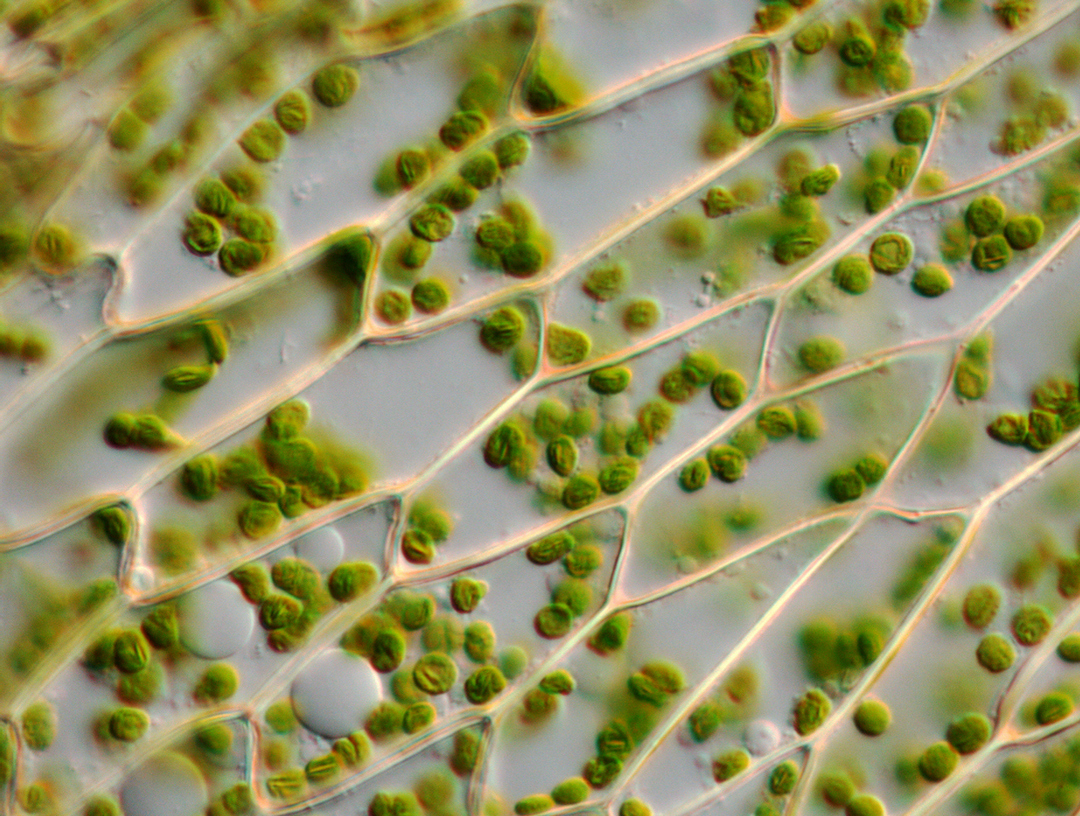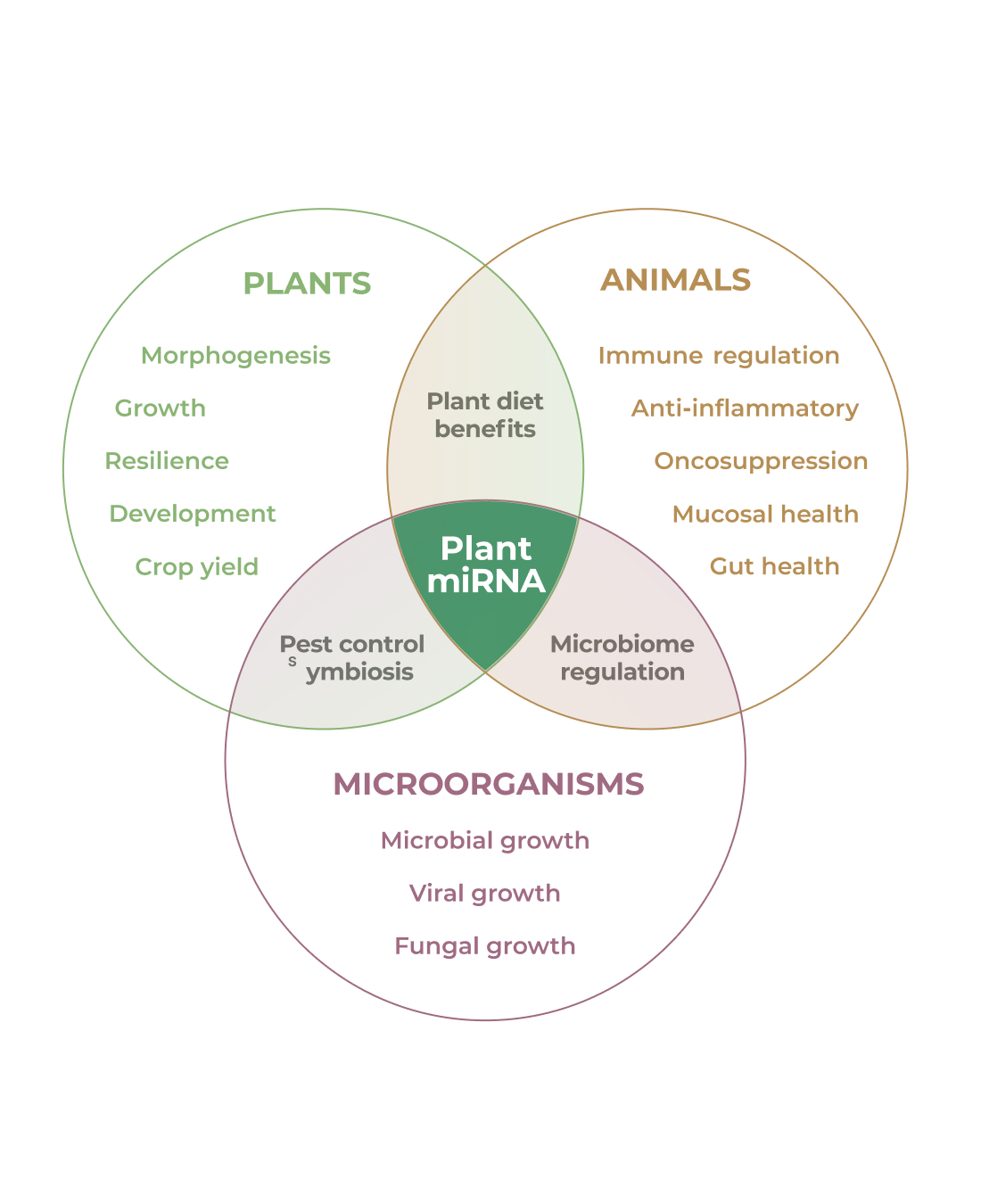microRNAs (miRNA) are small RNA molecules produced by all organisms to regulate key physiological functions. Plants use miRNA to stimulate plant growth, regulate symbionts and fend off pathogens and parasites. They have also been co-opted by animals to have a powerful effect on their immune systems. miRNA produced by plants all contain a unique chemical structure which makes hard to break down and degrade and confers them anti-inflammatory and immunomodulatory properties through the interaction with TLRs, essential receptors that initiate the innate immune response in humans and mammals.
Besides these properties, shared by all plant miRNA, each specific miRNA sequence is recognised by the universal RNA machinery and can modulate expression of specific genes in other organisms. Combining their unique biological properties with the diversity of miRNA produced by different plant species – called miRNomes – they represent a vast source of bioactive compounds which has remained untapped until now.
Millions of years of
evolution have equipped plants with a huge diversity of miRNA to regulate internal processes and to interact with their environment
-
Chen, X., Rechavi, O. Plant and animal small RNA communications between cells and organisms. Nat Rev Mol Cell Biol 23, 185–203 (2022).
-
Cui, J., Zhou, B., Ross, SA., Zempleni, J. Nutrition, microRNAs, and Human Health. Adv Nutr 8, 105–112 (2017)
-
Weiberg, A., Bellinger, M., Jin, H. Conversations between kingdoms: small RNAs. Curr Opin Biotechnol 32, 207–215 (2015)
-
Teng, Y., Ren, Y., Sayed, M. et al. Plant-Derived Exosomal MicroRNAs Shape the Gut Microbiota. Cell Host Micr. 5, 637-652 (2018)
-
Betti, F., Ladera-Carmona, M.J., Weits, D.A. et al. Exogenous miRNAs induce post-transcriptional gene silencing in plants. Nat Plants 7, 1379–1388 (2021).
-
Cai, Q., Qiao, L., Wang, M. et al. Plants send small RNAs in extracellular vesicles to fungal pathogen to silence virulence genes. Science 360, 1126-1129 (2018)
-
Cavalieri, D., Rizzetto, L., Tocci, N. Plant microRNA as novel immunomodulatory agents. Sci Rep 6, 25761 (2016)




